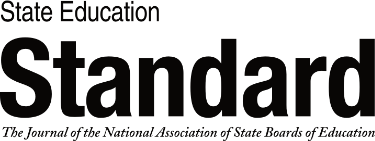How Illinois Gets Students Ready for College and Careers
State leaders build coherent policies and frameworks to help communities guide students through their postsecondary paces.

In 2009, the Lumina Foundation published “A Stronger Nation through Higher Education: How and Why Americans Must Meet a ‘Big Goal’ for College Attainment,” which projected a staggering shortfall of college-educated adults to meet labor market demand—16 million nationally by 2025.[1] Like many states, the Illinois P-20 Council quickly established a statewide goal in response: to increase the proportion of Illinois adults with high-quality degrees and credentials to 60 percent by 2025.[2] According to Georgetown’s Center on Education and the Workforce projections, 70 percent of Illinois jobs will require some amount of postsecondary education by 2031.[3] As of 2023, Illinois stood at 57.3 percent, according to Lumina.[4]
Illinois’s state leaders realized that achieving the overall goal would mean grappling with how to better inform students and better prepare them to navigate their transition into college and careers. The leaders’ decade-long work on aligned state policy frameworks and resources, particularly the Illinois Postsecondary and Career Expectations (PaCE) framework, serves as a case study for how state boards of education can build college and career readiness for students in all their diverse contexts.
Two principles animated Illinois’s work. First, all students should be prepared for both college and careers—not one or the other—with a variety of pathways after high school from which to choose. Second, effective local practices should inform state policy. The core lesson from Illinois can be summed up with the words of late tennis great Arthur Ashe: “Start where you are. Use what you have. Do what you can.”
All students should be prepared for both college and careers—not one or the other—with a variety of pathways after high school from which to choose.
A cornerstone of college and career readiness policy in Illinois is the Postsecondary and Workforce Readiness (PWR) Act of 2016, which established four aligned, student-centered, competency-based strategies: [5]
- the PaCE framework to help communities organize career exploration and development, college preparation and selection, and financial literacy requirements;
- college and career pathway endorsements on high school diplomas for students who completed an individualized learning plan, engaged in a career-focused instructional sequence, participated in work-based learning, and demonstrated readiness for college-level reading and math;
- a statewide system for transitional math and English instruction to increase high school seniors’ college readiness and reduce remedial work; and
- a pilot program for voluntary district participation in a competency-based education model, giving students more flexibility to progress as they demonstrate mastery of concepts.
The Illinois P-20 Council’s Postsecondary and Workforce Readiness Working Group developed these four strategies through an inclusive, multiyear process aimed at identifying indicators and recommending policies to align transitions across P-20 and with other stakeholders and remove barriers to student success.[6] Notably, implementation of these strategies necessitates coordination by districts, postsecondary institutions, employers, and other public and private organizations. With the exception of transitional math, the remaining strategies embodied in the 2016 law were fully voluntary for districts.
Implementation of these strategies necessitates coordination by districts, postsecondary institutions, employers, and other public and private organizations.
Since the PWR Act’s passage, most Illinois school districts serving grades 9-12 have implemented one or more of the strategies, largely voluntarily. State leaders have leveraged organizations that convene multiple types of stakeholders, such as the P-20 Council, to explore and identify ways to reinforce college and career readiness. For example, the Illinois State Board of Education engaged the P-20 Council’s College and Career Readiness Committee to inform development of the College and Career Readiness Indicator (CCRI), which is part of the school quality framework in the state’s Every Student Succeeds Act plan.[7] As a result, the indicator’s components align substantially with the information and activities outlined in the PWR frameworks.[8] The committee also conducted an extensive formal review and feedback process to ensure that the state’s Perkins V plan was aligned as well.
The core principles of the PWR Act and the CCRI are further reinforced in the Dual Credit Quality Act, the Illinois Career Pathways Dictionary, and in the state board and other agencies’ strategic plans.[9] In this way, districts and community partners get clear, consistent messages about what they are expected to do to prepare students for college, careers, and life. As a result, Illinois is seeing measurable improvements in the number of public high school students accessing early-college credits (17 percent in school year 2023–24, up from 9.3 percent in 2017–18) and fewer students taking remedial coursework in college (table 1).[10]

Developing the PaCE Framework
Because it embodies the central organizing principles of all Illinois’s policy initiatives around college and career readiness, the PaCE framework bears a closer look. Once the PWR Act became law, the state’s education agencies launched robust stakeholder engagement to delve into the college and career readiness literature and examine best practices. A workgroup comprising practitioners, subject-matter experts, and policymakers looked at surveys of Illinois communities, national frameworks, and relevant existing standards for curriculum and instruction.
Beginning from an assumption that all students should be prepared for college and all students should be prepared for careers, the workgroup focused on building a framework that advanced readiness equitably.[11] This focus led the group to consider key cognitive strategies, content knowledge, academic behaviors, and “college knowledge,”[12] as well as models from other states.
To ensure the framework’s components would align with existing expectations of districts, they were cross-walked to the Illinois social science standards for financial literacy for grades 8–12, the Illinois social-emotional learning standards for grades 6–12, and the American School Counselor Association’s school counseling standards.
The workgroup also gathered feedback from across the state. As a result, when the state’s education agencies initially adopted the PaCE framework, it was already on the radar of many local leaders, who were eager to use it to organize their work.
When the state’s education agencies initially adopted the PaCE framework, it was already on the radar of many local leaders, who were eager to use it to organize their work.
The state board, the Illinois Student Assistance Commission, Illinois Community College Board, and Illinois Board of Higher Education adopted PaCE in July 2017. Where it began as an initiative with voluntary implementation, in May 2022, the governor signed a law that called on districts serving grades 6-12 to implement a local adaptation of PaCE or opt out.[13]
What It Contains
PaCE contains guidelines for grades 6-8 and for grades 9-12. The middle school part explains what a student at each grade level should be exposed to and what a student should be supported to do at the end of each grade level relative to three key domains: aspiration, self-advocacy, and planning. For example, by the end of grade 8, the framework calls for a student to be supported in developing an educational plan for at least one career interest and to be exposed to a unit, course, or workshop in financial literacy.[14]
The high school guidelines explain what students should be supported to do and what they should know in three key domains: career exploration and development; postsecondary education exploration, preparation, and selection; and financial aid and literacy. For example, by the end of grade 11, a student should be supported in gaining at least one early-college credit and should know deadlines for relevant industry certification applications and tests and for financial aid application submissions.[15]
Some Distinct Advantages
Comprehensiveness. Illinois’s framework is organized around comprehensive domains for preparing all students with critical skills and knowledge. As a student learns the information and gains the experiences outlined in a local framework, they become academically ready while also acquiring essential job skills such as communication, collaboration, and a growth mindset. They will thus be prepared for a broad range of employment opportunities.
Early Exploration and Preparation. Too often, schools present college and career readiness strategies only to high school juniors and seniors, which can be too late in their schooling to make a substantial difference. Scaffolding information and experiences beginning in the sixth grade, PaCE prepares students for college, careers, and life through a series of developmentally appropriate stages. Supporting middle school students in developing aspirations, planning, and self-advocacy prepares them to later engage in high school career and postsecondary exploration, preparation, and selection.
Too often, schools present college and career readiness strategies only to high school juniors and seniors.
A student checklist helps students make sense of what they should be learning and doing at each stage of their high school journey.[16] At a meeting of the Illinois Education and Career Success Network’s Student Advisory Council, students noted their peers’ appetite for early college and career preparation.[17] Student Ashley Smith called the checklist “very successful in helping you organize your ideas in a very simple and stress-free manner.”[18]
Statewide Guidance, Local Adaptation. Its creators expect PaCE to help families, schools, and state agencies plan and that it will not erect new barriers for students or schools. While the framework outlines broad information and activities for districts to consider, districts are encouraged to examine their existing strategies and consider how they fit together in a local framework. According to the Illinois Student Assistance Commission’s tracking, roughly three-fourths of implementing districts and schools have adapted the PaCE framework, and roughly one quarter have adopted the state framework wholesale.
Implementation Support. The Illinois Student Assistance Commission has leveraged its professional development capacity to drive implementation of the framework. With the state board and other partners, it developed implementation guides and templates, including ways districts can engage community partners.[19] It also offers customized training, hosts an annual symposium, and leverages its ISACorps,[20] a network of near-peer mentors to help high school students and their families navigate the process of applying to and entering college.
Simultaneously, the state board has focused on capacity building through its existing channels for preparing educators and advisors. Peer-to-peer networks such as the Illinois Education and Career Success Network facilitate virtual and in-person opportunities for communities to learn from one another about how to implement PaCE as well as receive direct technical assistance.
Voluntary. While the PWR Act called for adoption of a state framework, school and district use or adaptation was voluntary for over five years before the renewed legislative nudge in 2022. The organic scaling of local adoption at the outset can be attributed to extensive state-level work to develop and deliver tools and training for local leaders.
District and School Leaders’ Support
District leaders have shared in conversations and surveys that the framework’s comprehensive nature lends coherence to their existing college and career readiness efforts. It underscores that not only guidance counselors are responsible for students’ preparation; it takes efforts from the entire school community, including teachers and administrative staff. District leaders also appreciate how the framework fosters clearer communications with students and families about the opportunities the district is offering. Notably, the Illinois Student Assistance Commission reports that over their many PaCE workshops and trainings, the most common comment they hear from district leaders is “this is not new stuff”—that is, PaCE is more a container for their existing efforts.
Not only guidance counselors are responsible for students’ preparation; it takes efforts from the entire school community.
Joshua Stafford, superintendent of Vienna High School District 133 in Vienna, Illinois, recounts the shift in his district, which had an early-college program that helped 10 to 18 percent of its seniors earn associate degrees before graduation. “This jump was welcomed by our students, parents, and community, but we were still missing a major piece—a holistic umbrella under which all of this work resides,” Stafford said.
Vienna leaders then used the PaCE framework as a model for their own career framework, Career Connected Life Ready. School and district staff now track all students’ progress against their framework, ensuring there is an accountability measure for each of its aspects and that all students are actively engaged in planning.
“We used to go into triage mode when the spring semester would come, attempting to make last-minute efforts with our soon-to-be graduating seniors,” Stafford said. “Now, instead of triage, we are celebrating college admission, scholarship awards, successful job shadow experiences, planned summer internships, job placements, boot camp start dates, and the endless other future plans … our students have.”
Key Lessons from Illinois
State and local leaders grapple with myriad mandates and challenges every day. To avoid adding burdens, it is essential to consider ways of working smarter, not harder, by leveraging existing expertise and resources. These recommendations reflect the themes of starting where you are, using what you have, and doing what you can.
Use existing, unifying core value propositions for college and career readiness. Grounding framework development in existing priorities—strategic plans, state law, and so on—can produce more meaningful results. Such an approach allows actors across state and local systems to see their place in improving college and career readiness.
Consider how policies can be mutually reinforcing. PaCE is successful because it reinforces other key policies, such as ESSA and Perkins state plans. This alignment reduces compounding or competing expectations on schools and students, adding clarity for students navigating these systems and ensuring school practices are mutually reinforcing in support of student success. Clear alignment also helps reduce resistance to what might otherwise come across as a “new” expectation.
Learn from existing practices. PaCE focused on documenting the universe of best practices. The resulting framework is thus demonstrably achievable and leverages the expertise of local leaders to drive implementation. For districts that have much more of a postsecondary preparation focus, PaCE can help illuminate opportunities to strengthen career-focused programming and vice versa.
Network across state leadership for implementation support. State leaders should consider how their peers can collaborate. In Illinois, the state board is leading on college and career pathways implementation and monitoring the CCRI, while the student assistance commission lends its professional development capacity.
Leverage existing networks and auxiliary policy development support. Beyond official state leadership, cross-stakeholder committees can help develop and refine policies and resources that communities will need as they work to implement newer frameworks. Further, community networks often reach different types of leaders than those state agencies traditionally encounter.
Cross-stakeholder committees can help develop and refine policies and resources that communities will need as they work to implement newer frameworks.
Anticipate limitations without funding. As with any initiative that is (or is perceived as) new, districts may be resistant to implementation without designated funding to support their efforts. State leaders will need to consider how to support implementation in other ways, including through technical assistance and shifting how existing funds might be able to support shifting approaches locally.
Foster scaling by ensuring flexibility. Districts are eager to set the course and determine what works in their community. By grounding their efforts in core principles offered statewide, district staff can see how they are already driving toward those principles. In adapting PaCE, they can add consistency to their existing efforts, supported by external validity. This flexibility has helped districts that may have had reservations about implementation or who resisted adopting PaCE wholesale.
Scaffold implementation with broad support. A combination of state agency leaders and selected networks have supported local leaders as they implement PaCE. Such support is essential to statewide scaling, as it helps districts identify their core reservations and clarify what this could look like locally, particularly when they fear a mandate.
Elevate local leaders. Elevating local examples through agency websites, webinars, newsletters, conferences, and training supports organic scaling across districts. Hearing from local leaders can help inspire peers to join the journey and address underlying fears or hesitation. The student assistance commission shared over 100 framework examples spanning a range of contexts for those who are not early adopters.[21]
Reinforce success with a nudge (not a mandate). Establishing a default expectation alongside an opt-out process has been an effective policy tool in Illinois. But a natural scaling came first. When the 2022 law moved from voluntary pilot to a default to implementation, districts newer to PaCE could see examples of successful implementation from across the state. Further, the 2022 update to PaCE reached grade 6, which many communities had already done, even though the original statewide framework only addressed grade 8 and up.
Thoughtfully designed state policy and support can drive forward the goal of ensuring all students are ready for what comes next. In Illinois, work to develop and implement the PaCE framework exemplifies the value of an aligned, comprehensive approach.
Emily Rusca is director of policy at Education Systems Center at Northern Illinois University.
[1] Dewayne Matthews, “A Stronger Nation through Higher Education: How and Why Americans Must Meet A ‘Big Goal’ for College Attainment” special report (Lumina Foundation, February 2009).
[2] Illinois P-20 Council, “About Us,” web page.
[3] Georgetown Center on Education and the Workforce, “After Everything: Projections of Jobs, Education, and Training Requirements through 2031,” state report (2024).
[4] Lumina Foundation “A Stronger Nation,” tracking tool (2025). Illinois’s rate was 49.3 percent in 2009, but the subsequent increase incorporates the addition to the tracking measure of certificates and industry-recognized certifications, which were 8 percent of the total in 2023.
[5] Illinois Postsecondary and Workforce Readiness Act, Public Act 099-0674.
[6] The working group was a joint effort between the P-20 Council’s College and Career Readiness Committee and the Data, Accountability, and Assessment Committee and was composed of a broad range of secondary and postsecondary education leaders, state agency staff, and statewide policy/advocacy organizations.
[7] Education Systems Center at Northern Illinois University, “Illinois’s ESSA College & Career Readiness Indicator: Definition & Implementation Recommendations” (December 2017).
[8] Emily Rusca and Edith Njuguna, “High School Transformation: A Crosswalk of PaCE, CCPE, and CCRI” (Education Systems Center at Northern Illinois University, September 2023).
[9] Dual Credit Quality Act, Public Act 96-194, 110 ILCS 27/1-40; Illinois Career Pathways Dictionary; Illinois State Board of Education, “Illinois State Board of Education 2024–2027 Strategic Plan,” January 2024.
[10] Illinois School Report Card, “Advanced Academic Coursework,” web page, 2024. The state has also seen significant increases in two other elements of PWR: college and career pathway endorsements and transitional instruction.
[11] Emily Hodge, Shaun Dougherty, and Carol Burris, “Tracking and the Future of Career and Technical Education: How Efforts to Connect School and Work Can Avoid the Past Mistakes of Vocational Education” (National Education Policy Center, School of Education, University of Colorado Boulder, February 2020).
[12] David T. Conley, College Knowledge: What It Really Takes for Students to Succeed and What We Can Do to Get Them Ready (San Francisco: Jossey-Bass, 2008).
[13] Illinois Public Act 102-0917. ILCS 105 ILCS 5/10-20.83 and 5/34-18.78, and 110 ILCS 148/15.
[14] “Illinois Postsecondary and Career Expectations (Middle School),” framework (Illinois Student Assistance Commission, 2023).
[15] “Illinois Postsecondary and Career Expectations (High School),” framework (Illinois Student Assistance Commission, 2023).
[16] Illinois Student Assistance Commission, “PaCE Student Checklist.”
[17] Illinois Education and Career Success Network, “Student Advisory Council: Spring 2023 Meeting,” web page, May 1, 2023.
[18] Ashley Smith, “Illinois 60 by 25 Network Student Advisory Council,” YouTube video, Illinois Education and Career Success Network channel, March 10, 2022.
[19] Travis McGuire, “Illinois Postsecondary & Career Expectations (PaCE) Implementation Guide” (Illinois Student Assistance Commission, October 2021); Northern Illinois Regional P-20 Network, “On PaCE to Thrive: Guide to Cultivating Community Action for College and Career Readiness.”
[20] Illinois Student Assistance Commission, “ISACorps,” web page.
[21] Illinois Student Assistance Commission, “Examples of Customized PaCE Frameworks,” web page.
Also In this Issue
Sustaining Gains at the Pre-K to Kindergarten Transition
By Robert C. Pianta and Christina StephensBetter alignment in policy and practice can ensure that the skill boosts from pre-K persist throughout the elementary years.
Supporting Students in the Middle Grades
By Creed Dunn, Judy Frank and Allyson MorganAcademic success, engagement, attendance, and postsecondary preparation hinge on smooth transitions at the center of K-12.
Promoting Students’ Well-Being during the Transition to High School
By Briana A. López and Aprile D. BennerAcademic success in ninth grade requires supports for healthy social and emotional development.
Prioritizing the Measures of K-12 Success That Matter Most
By Ryan ReynaState leaders can drive real system improvements by rewarding K-12 schools for helping students succeed after high school.
FAFSA as a Pathway to Postsecondary Education
By Alessandra Cipriani-Detres, Anika Van Eaton and Elizabeth WoodLearning from early adopters of universal FAFSA can help other states design and implement effective policies.
How Illinois Gets Students Ready for College and Careers
By Emily RuscaState leaders build coherent policies and frameworks to help communities guide students through their postsecondary paces.
Supporting Students with Disabilities in Transitioning to Adulthood
By Jennifer K. Migliore, Jessica Ellott, Kimberly J. Osmani and Lydia DempseyA collaborative approach can improve students’ outcomes.









 i
i
 i
i
 i
i